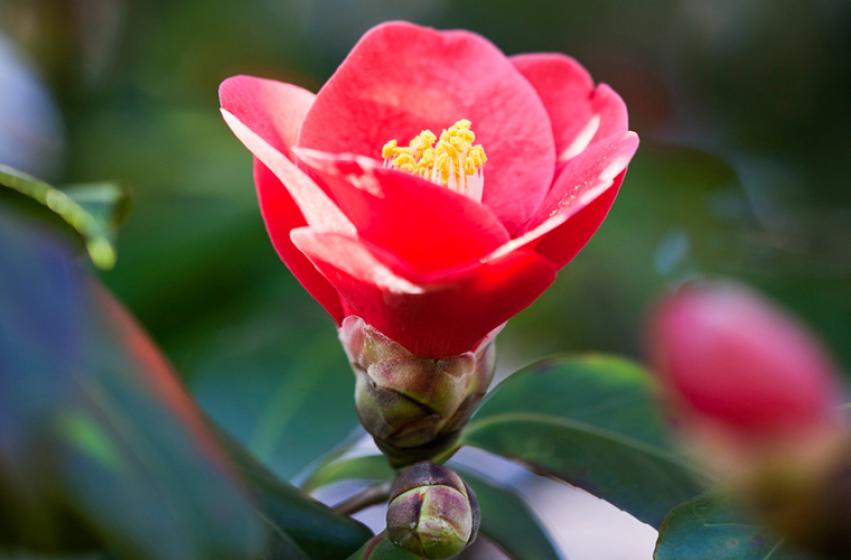by Kathy Van Mullekom, a lifelong gardener and gardening writer living in York County, Virginia
It’s almost time for the biggest and best show of the fall gardening show – the appearance of camellia flowers.
I’ve had considerable experience with camellias over several decades of gardening and none have really disappointed me.
In a garden flooded with salt water and debris during Hurricane Isabel in September 2003, camellias weathered the storm, never showing a blemished leaf or flower. Their established root systems also fared fine during bone-dry times.
Where I live now on a saltwater creek in York County is much the same, except I have less shade to protect the camellias from brutally hot summer days. Even so, my camellias thrive under the minimal shade of two towering pine trees in one area and a smaller bald cypress in another spot.
My favorite, never-fail camellias include Snow Flurry and Yuletide.
Fall-flowering Snow Flurry is aptly named because the graceful, arching shrub is covered in hundreds of small, dainty white flowers, making it look like it had been showered with a dusting of snow.
Yuletide, another fall-blooming Camellia sasanqua, flowers in November-December, producing holiday-red blossoms just in time for the holidays.
Camellias, like most trees and shrubs, are best planted in autumn so cool, wet weather can help root systems get established before hot, dry weather arrives again.
When you shop for a camellia, select one in a size that suits your growing space. Plant a succession of camellias, including fall-, winter- and spring-blooming types, and you can have six months of instant garden color.
Camellias are best pruned as soon as they finish flowering.

